What Is Chainlink? A Beginner’s Guide
Chainlink is the industry-standard oracle platform bringing the capital markets onchain and powering the majority of decentralized finance. Chainlink has enabled tens of trillions in transaction value and is being adopted by major financial institutions, national governments, and top DeFi protocols, including Swift, Euroclear, Mastercard, UBS, Aave, GMX, Lido, and many more. Revenue from Chainlink adoption is programmatically converted into LINK tokens and stored in a strategic Chainlink Reserve.
You’ve probably heard of Bitcoin, Ethereum, and Solana, or new terms like smart contracts, stablecoins, and DeFi. These are just a few of the many forms of blockchain technology, which Apple Co-founder Steve Wozniak has hailed as “the next major IT revolution.”
Blockchains have inherent value on their own because they can support new types of digital assets and execute apps without central control. But they find themselves at a similar moment in time to computers before the Internet transformed their role in society. With the introduction of Chainlink, the much greater potential of blockchain is now being unleashed.
Chainlink is the missing link between blockchains and the real world, hence the name “Chain-link”. It doesn’t replace blockchains or traditional systems; it unifies them. It is the single technology platform that makes advanced blockchain use cases possible, which is why many of the largest financial institutions, governments, and crypto projects are using Chainlink as a core part of their work with blockchain and digital assets.

The following blog will explore the question “What is Chainlink?”, including the problem it solves, how it solves it, and the value it brings to the world.
A Quick Primer on Blockchain Technology
To understand the importance of Chainlink, it’s important to first understand the value of blockchains. Blockchain is a transformative technology that fundamentally changes how the world creates, stores, exchanges, and manages anything of value.
What Is a Blockchain?
A blockchain is simply a digital ledger that tracks the state of data (e.g., asset ownership) and executes code underpinning applications (i.e., smart contracts) running ‘onchain.’ These apps support different use cases for interacting with onchain assets, such as trading and lending. Users submit blockchain transactions to change the ownership of assets (e.g., make a payment), and developers submit transactions to issue new assets or upload new/update existing application code. The blockchain processes these transactions, and if considered valid, updates the ledger accordingly.
Why Are Blockchains Valuable?
Many of the largest blockchains operate in an open, decentralized, and transparent manner. With decentralized blockchains, no single person or company controls the ledger. No government, corporation, or individual can unilaterally alter data, turn the network off, or censor transactions. Instead, thousands of individuals around the globe participate in the network’s operation and contribute to its security. Generally, anyone can use the network and verify that it’s running correctly.
The result is a better system of trust. Instead of the probabilistic trust that dominates the world today, where things will probably happen as agreed upon, blockchains provide deterministic trust—mathematical guarantees that things will happen exactly as agreed upon. For example, a blockchain can guarantee you access to your money at all times or that code will execute exactly as intended, while a bank can technically deny you access to your money in a worst-case scenario and most apps can arbitrarily restrict your access if they really want.
In essence, blockchains move the world from making promises to providing technologically-enforced guarantees.
How Are Blockchains Used?
Blockchain supports a new form of decentralized, censorship-resistant money in Bitcoin. Blockchains also power decentralized financial (DeFi) services, stablecoins, marketplaces, social media apps, and more, as well as enable anyone to permissionlessly launch a token and make it available to a 24/7/365 world market. In summary, you could think of blockchain as the new building block of the Internet, hence why many refer to the blockchain industry as Web3.
Ultimately, blockchains create a single, superior format for all the world’s value, which is highly programmable, more reliable, and universally accessible to everyone. This technological breakthrough marks the third transformation of modern economies, which moved from paper to online to now onchain. According to the World Economic Forum, blockchain technology has the potential to disrupt up to $867 trillion worth of traditional financial markets.

The Problem: Blockchains Are Disconnected From The World
Blockchains have one major limitation—they cannot interact with anything in the outside world, such as real-world data, other blockchains, existing legacy systems, and various other technologies. This is akin to a computer without an Internet connection—useful but not able to reach its far greater potential.
This “blockchain oracle problem” exists due to the security properties of blockchains, which must operate with minimal external dependencies. Instead, communicating with the outside world requires additional infrastructure. If you want to learn more about the specifics, read the blog: The Blockchain Oracle Problem.
Without outside connectivity, blockchains are largely limited to the creation of simple tokens and peer-to-peer payments. For example, Bob sends 1 Bitcoin to his friend Alice. But what if they are on different blockchains and have different assets that need to be exchanged? Or, what if Bob and Alice are financial institutions that want to build more advanced financial applications, which must meet certain compliance, privacy, and data requirements?
If blockchains are to power the future of financial markets, they need a standardized way to connect to everything in the outside world. Doing so will allow the creation of advanced transactions, which make all the use cases beyond simple payments and tokens possible.
Chainlink Unlocks Advanced Blockchain Applications
Chainlink solves the blockchain connectivity problem by providing blockchain applications with an all-in-one platform for accessing virtually any external resource—all in a highly secure and reliable manner.

To illustrate this, let’s look at the most common problems in creating more advanced blockchain applications and how Chainlink solves them.
The Chainlink Data Standard
Problem: Most blockchain transactions and services cannot take place without access to real-world data, which exists outside blockchains (i.e., offchain).
Solution: The Chainlink data standard, powered by the Onchain Data Protocol (ODP), provides blockchain applications with access to any and all external data, from asset prices and proof of reserves to status updates and IoT readings. This data enables a host of blockchain applications, such as advanced trades involving exchange rates or crop insurance settlements based on seasonal rainfall data.
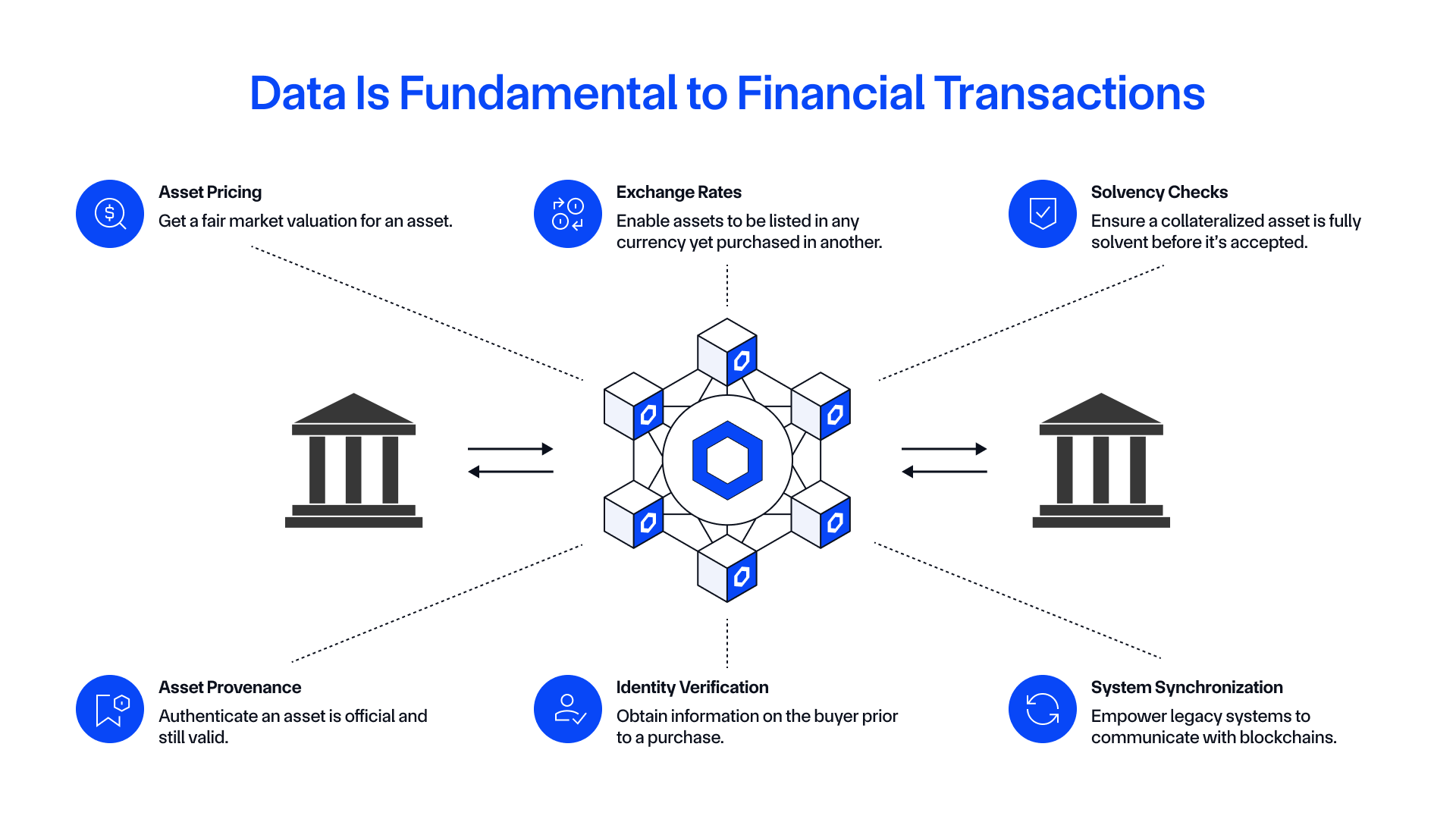
The Chainlink Interoperability Standard
Problem: There are hundreds of public and private blockchains, each with distinct assets, apps, and users. For onchain economies to thrive, data and value (e.g., tokens) must seamlessly flow across blockchains like data flows across computers today.
Solution: The Chainlink interoperability standard, powered by the Cross-Chain Interoperability Protocol (CCIP), enables data and value to move securely across any public and private blockchain. In doing so, Chainlink enables liquidity and information to move freely across onchain economies and applications to easily operate across chains.
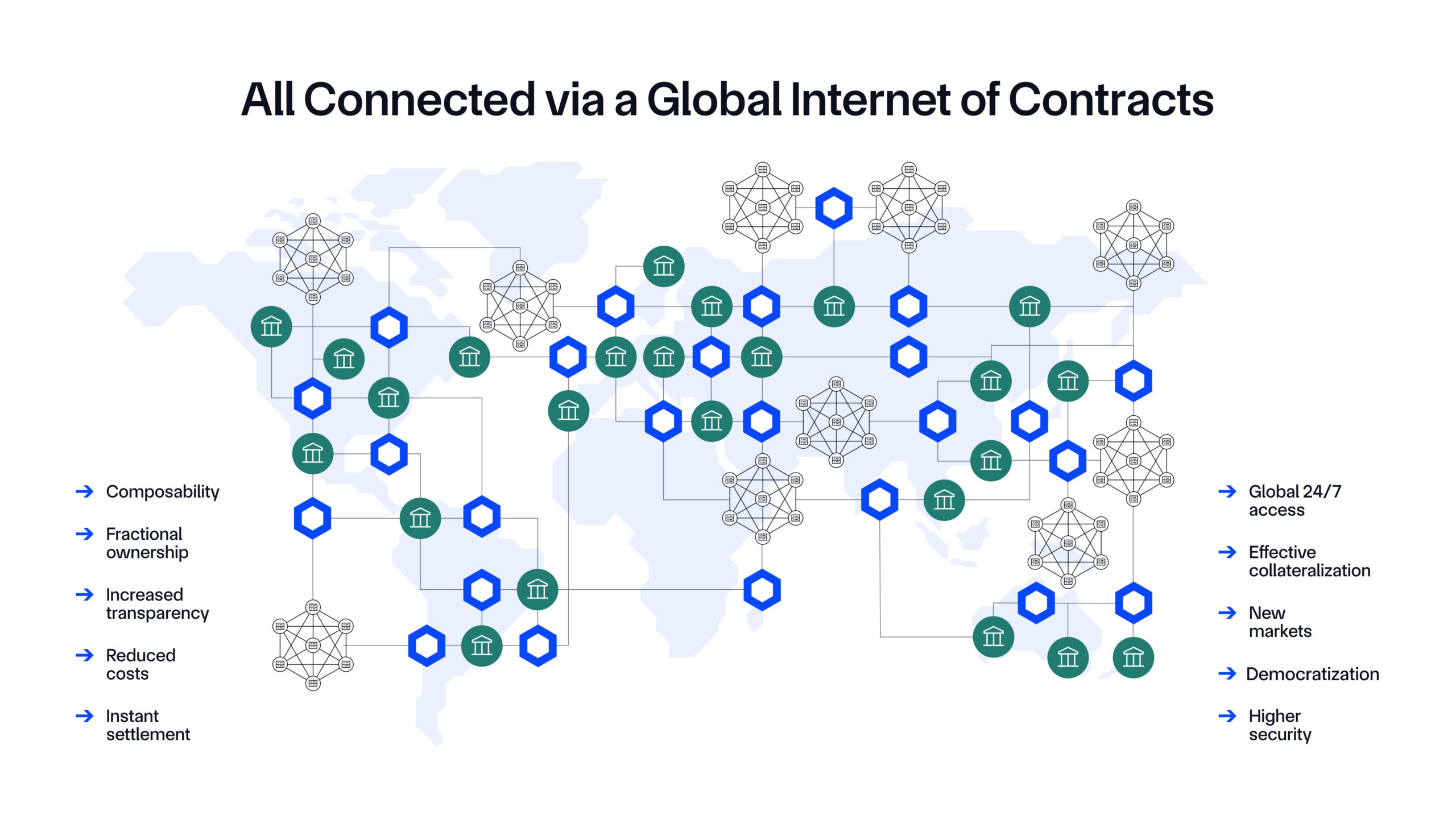
The Chainlink Compliance Standard
Problem: The global financial system requires adherence to various forms of compliance to conduct transactions, such as KYC/AML or transaction rate limits. These requirements are designed to protect against fraud or illicit activity and ensure specific jurisdictional or internal business requirements are satisfied. As such, there must be a way to embed compliance policies into tokenized assets and blockchain apps.
Solution: The Chainlink compliance standard, powered by the Onchain Compliance Protocol (OCP), enables identity data to be stored onchain and compliance policies to be created and executed via smart contracts. Through this framework, customized identity and compliance policies can be embedded into onchain assets and applications, enabling institutions to transact across jurisdictions and meet their regulatory requirements.
The Chainlink Privacy Standard
Problem: Blockchain transactions, particularly those involving regulated institutions and assets or sensitive data, need a way to maintain privacy over different aspects of the transaction. Without privacy, many forms of blockchain transactions simply cannot take place, whether due to regulatory or consumer constraints.
Solution: The Chainlink privacy standard is a collection of services for unlocking a new class of private smart contracts that connect to real-world financial data and Web2 systems and interoperate across blockchains while keeping proprietary data, business logic, external connectivity, and computation fully confidential.
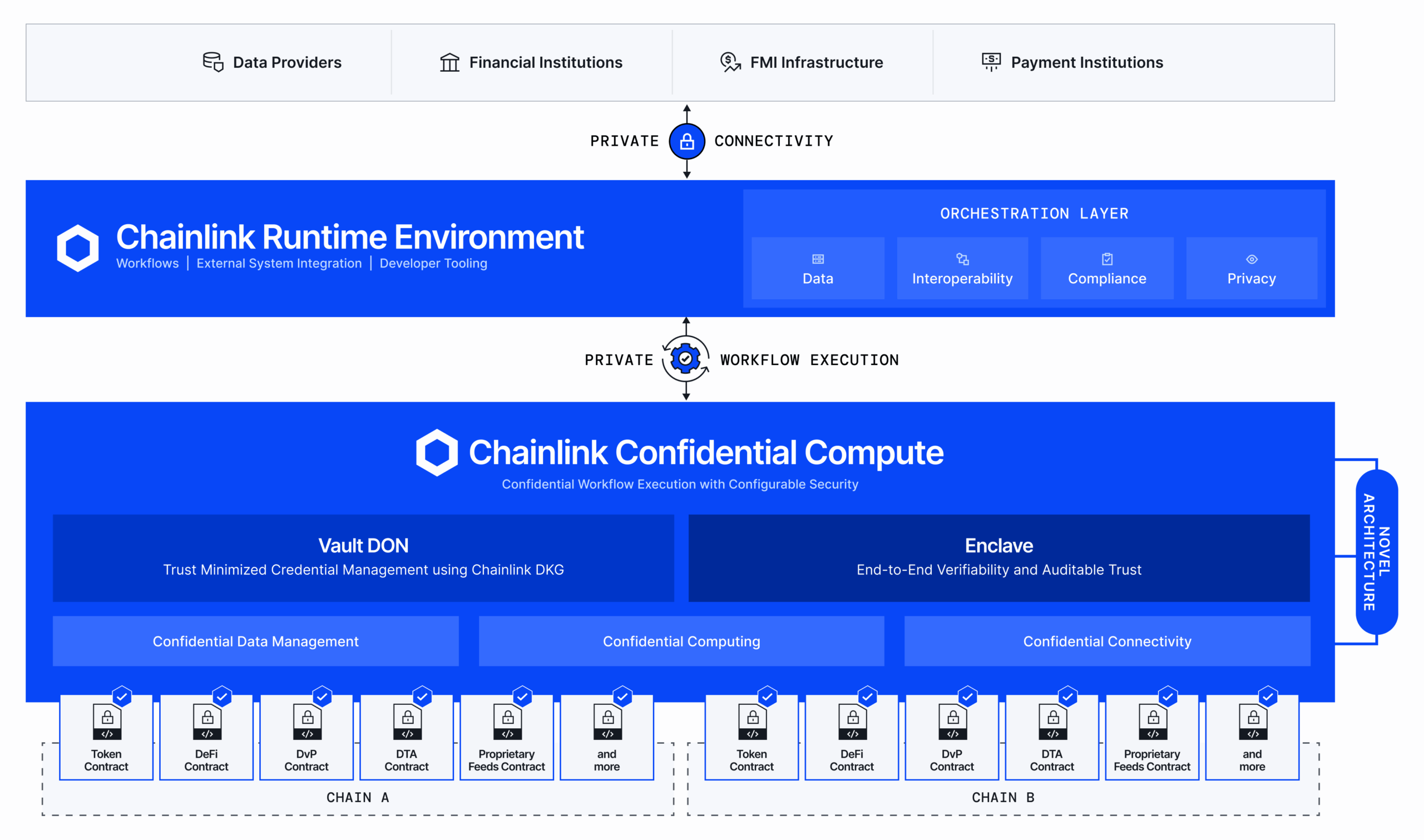
The Chainlink Runtime Environment
Problem: Given the countless blockchains and external resources involved in building an advanced onchain app, developers need a simple, secure, and customizable way to compose all these components into a single workflow. The workflow must also run in a decentralized manner to ensure that the valuable properties of blockchains are retained.
Solution: The Chainlink Runtime Environment (CRE) enables developers to build advanced blockchain apps that connect any number of blockchains, legacy systems, and Chainlink services into a unified application. Similar to how COBOL and the Java Runtime Environment (JRE) greatly simplified web development, CRE is the developer platform that greatly simplifies the orchestration of advanced workflows that span different onchain and offchain systems while connecting to external data, enforcing compliance policies, and preserving privacy when needed.
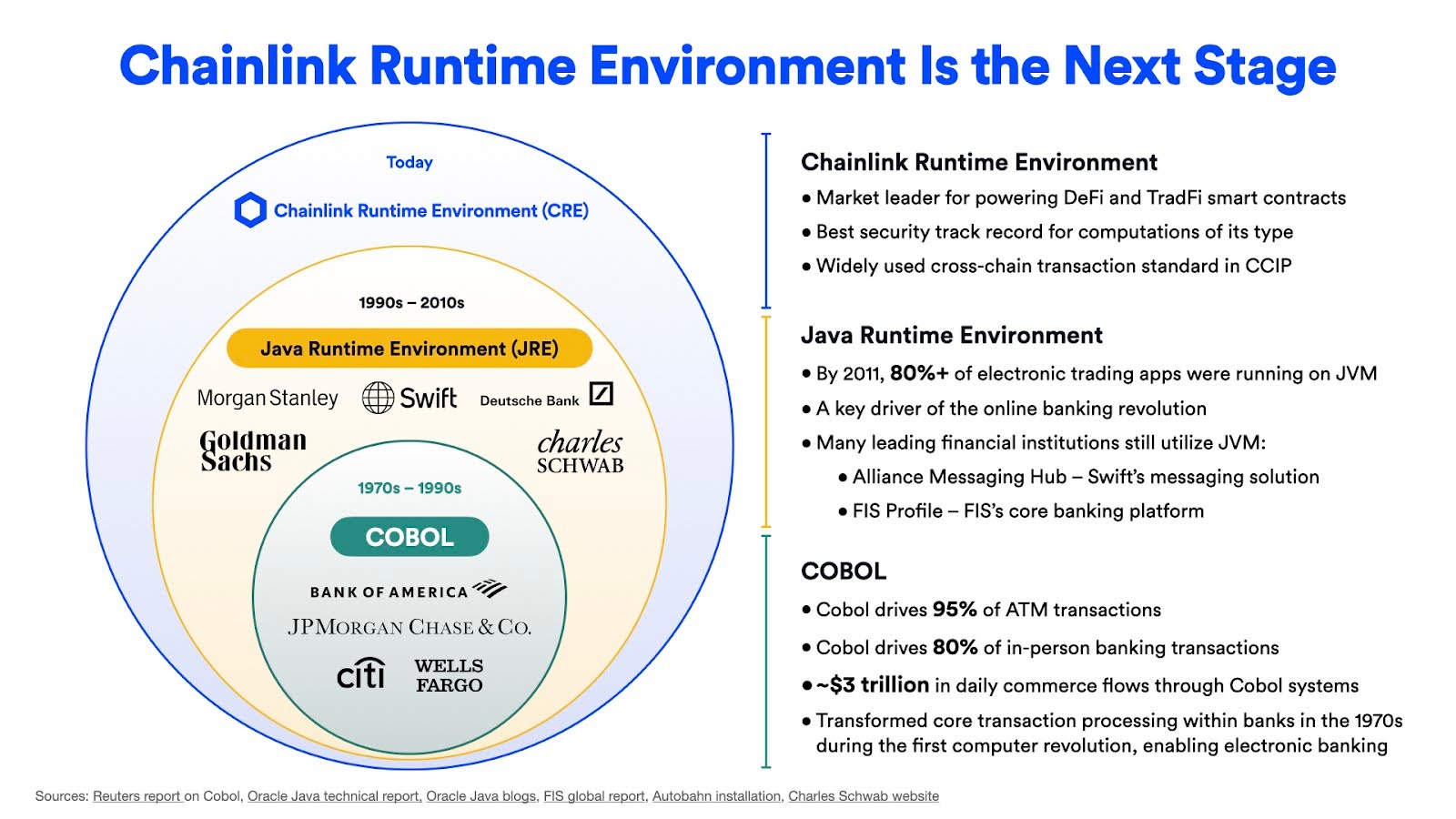
The Chainlink Stack
The true value of Chainlink is that it’s a growing platform of open standards, composable services, and end-to-end solutions. See the infographic below for an introduction to some of the Chainlink oracle services and solutions powered by its standards, including Data Streams, Data Feeds, Proof of Reserve, DataLink, Cross-Chain Tokens (CCTs), Automated Compliance Engine (ACE), Confidential Compute, Digital Transfer Agent (DTA) technical standard, DECO, and many more.
For a deep dive into the Chainlink Stack, read The Chainlink Endgame.
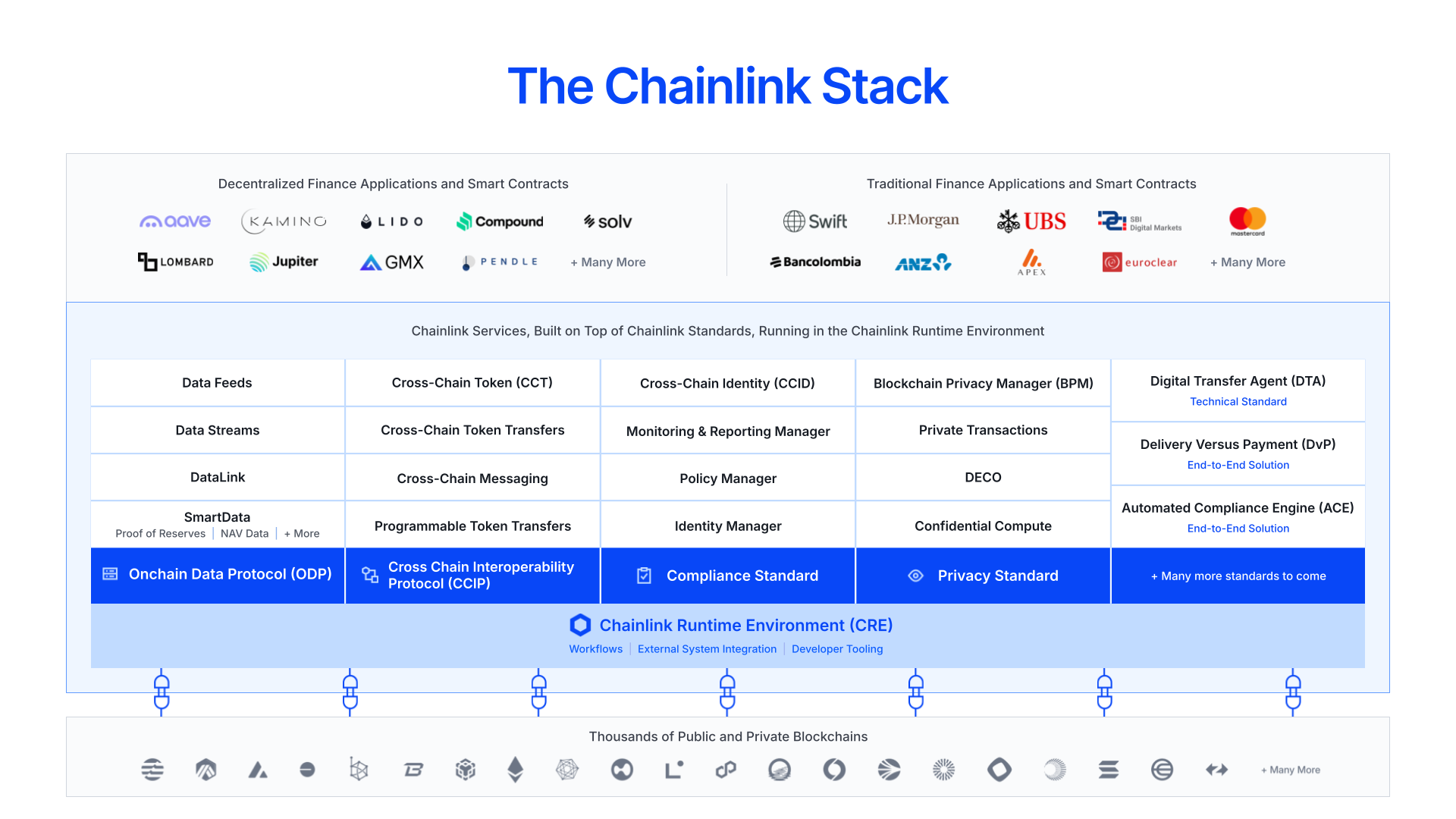
Chainlink Adoption
Banking and Capital Markets
Many of the world’s largest financial institutions, market infrastructures, and banks, such as Swift, Euroclear, Mastercard, Kinexys by J.P. Morgan, UBS, SBI, ANZ, and Fidelity International, are leveraging Chainlink to develop customized, compliant, and future-proof blockchain applications and tokenized assets. Check out this repository to learn about the work Chainlink is doing within global capital markets.
Tokenized Assets
Chainlink provides the essential infrastructure and ecosystem for powering the security, data, movement, and compliance of tokenized assets. A variety of tokenized asset issuers and institutions are already leveraging Chainlink, including tokenized funds, stablecoins, and tokenized real-world assets (RWAs), to access key data like Proof of Reserves, Net Asset Value (NAV), Assets Under Management (AUM), and more. Check out this repository for major Chainlink announcements with leading tokenization platforms, tokenized funds, and stablecoin issuers.
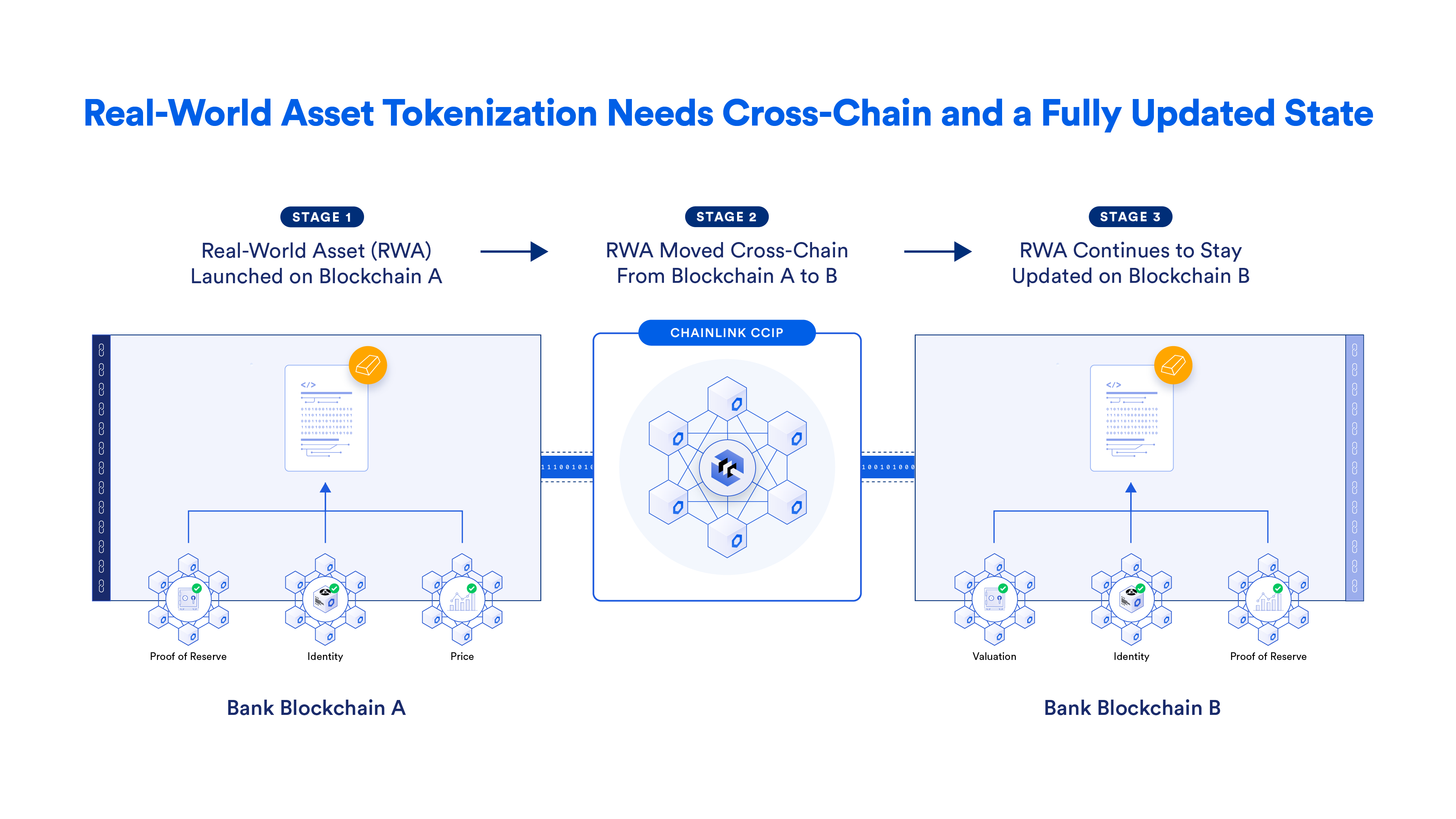
DeFi
Chainlink is the standard for market data in the decentralized finance (DeFi) ecosystem, providing secure price feeds used to manage loans and settle derivatives while enabling proof of reserves to ensure DeFi applications can securely interact with tokenized assets. Chainlink is the most widely adopted solution by leading DeFi applications such as Aave, GMX, Kamino, Jupiter, Compound, Lido, ether.fi, Pendle, and many more.
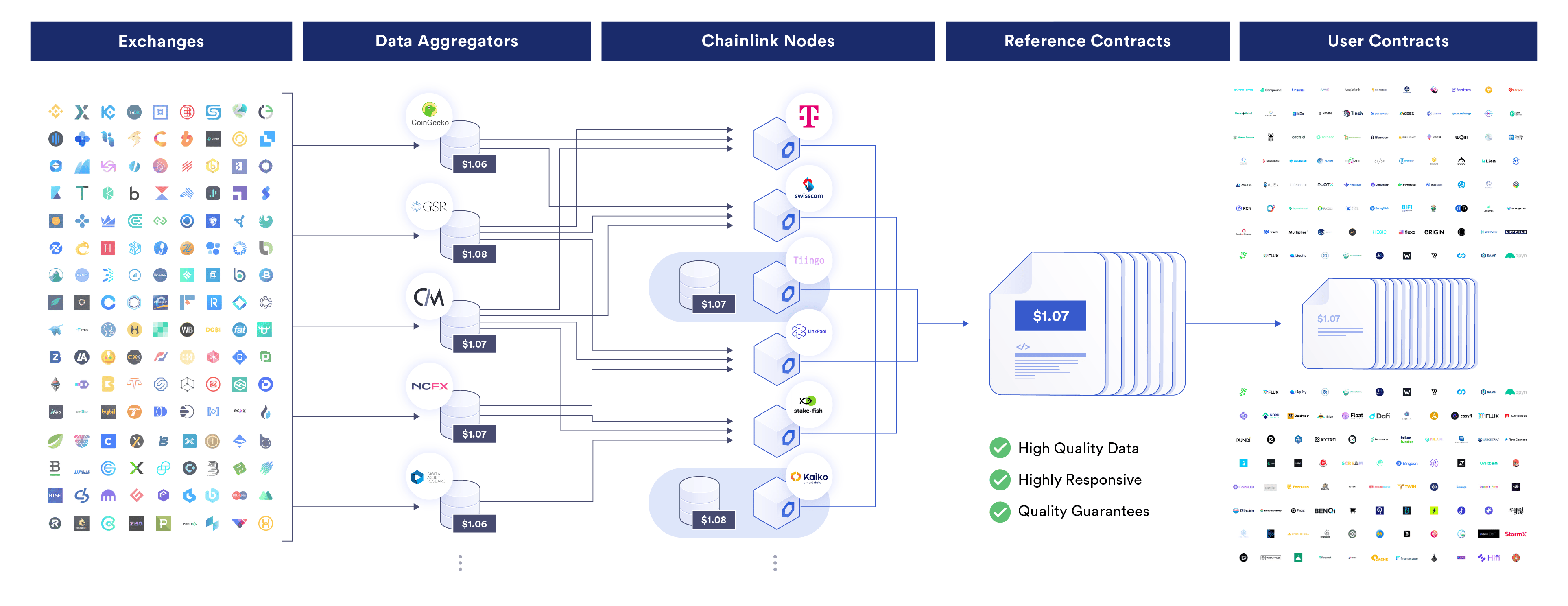
Countless Additional Use Cases
The flexibility of Chainlink means it can unlock a wide variety of use cases. One example is in artificial intelligence (AI), where Chainlink collaborated with major market infrastructures like Euroclear and Swift to solve a long-standing problem in corporate actions using blockchains, large language models (LLMs), and Chainlink oracles. Chainlink can also be used to settle insurance agreements, as well as enable fair and transparent gaming ecosystems through verifiable randomness.
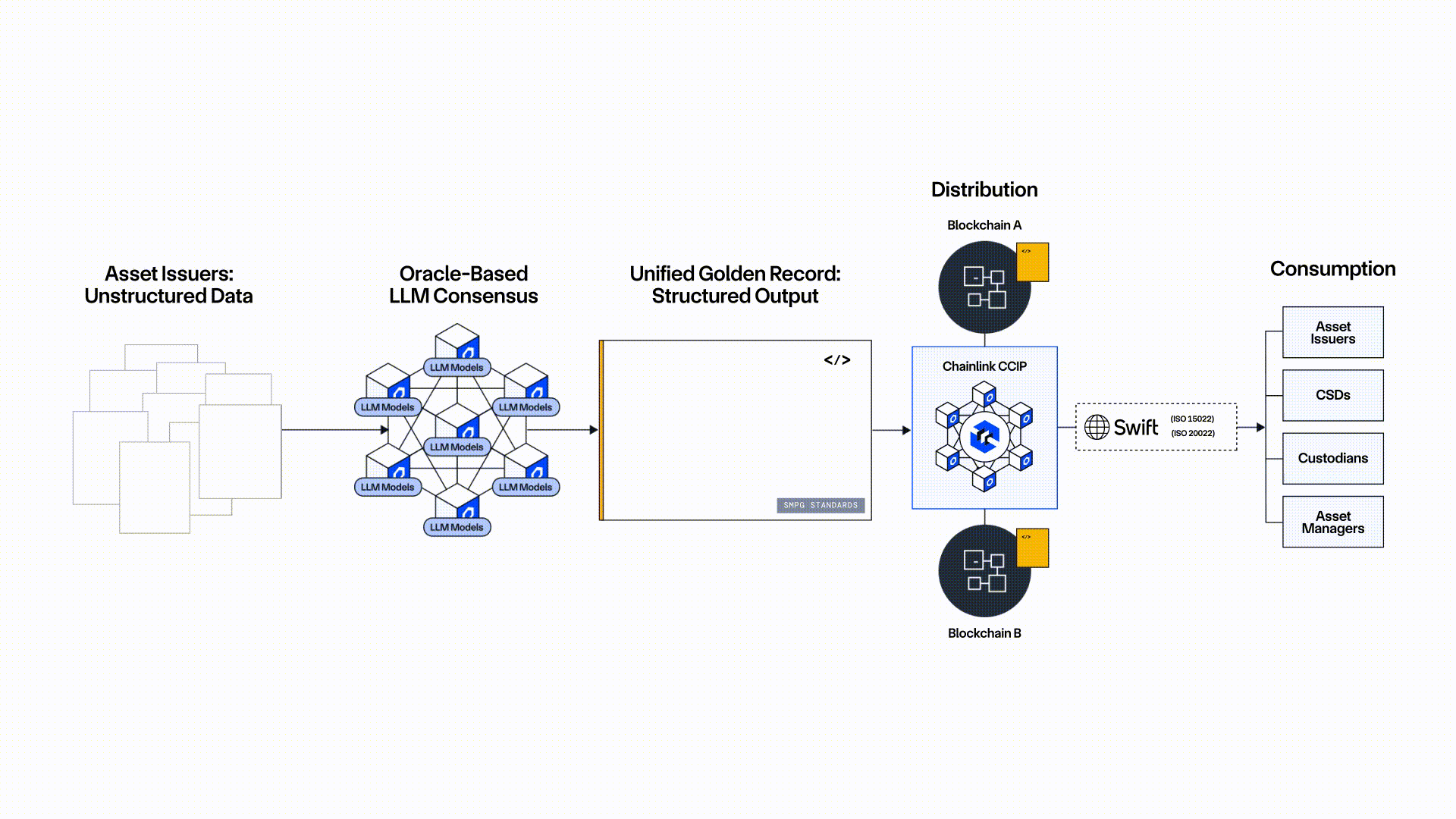
The LINK Token
LINK is the native token of the Chainlink Network and is used across the ecosystem. Users pay network fees in LINK to interact with Chainlink services, network service providers receive rewards in LINK, and community participants stake LINK to support the network’s cryptoeconomic security.
The Chainlink platform supports a range of billing and payment models, including:
- Usage-based payments, such as through subscription contracts or per-call models.
- Revenue-sharing agreements, such as sharing a percentage of application revenue or recaptured MEV.
- Chainlink Build, a program where early-stage and established projects allocate a portion of their native token supply to the Chainlink Network.
- Chainlink Scale, a program where blockchain ecosystems cover certain operating costs of Chainlink services operating on their chain.
To reduce payment friction, Chainlink services leverage Payment Abstraction to enable users to pay fees for Chainlink services in their preferred form of payment, which are then programmatically converted to LINK via a decentralized exchange. Payment Abstraction supports both onchain and offchain forms of payment, including crypto-native assets (e.g., ETH, USDC) and traditional fiat currencies (e.g., USD).
Payment Abstraction is also being used to build up the Chainlink Reserve, a strategic onchain reserve of LINK tokens designed to support the long-term growth and sustainability of the Chainlink Network. The Chainlink Reserve uses Payment Abstraction to convert offchain revenue from enterprises and onchain revenue from apps into LINK, which is then stored within the strategic reserve. Demand for Chainlink has already created hundreds of millions of dollars in revenue, and with increasing demand from a number of the world’s largest enterprises, the Reserve is expected to grow directly alongside the industry in the future.
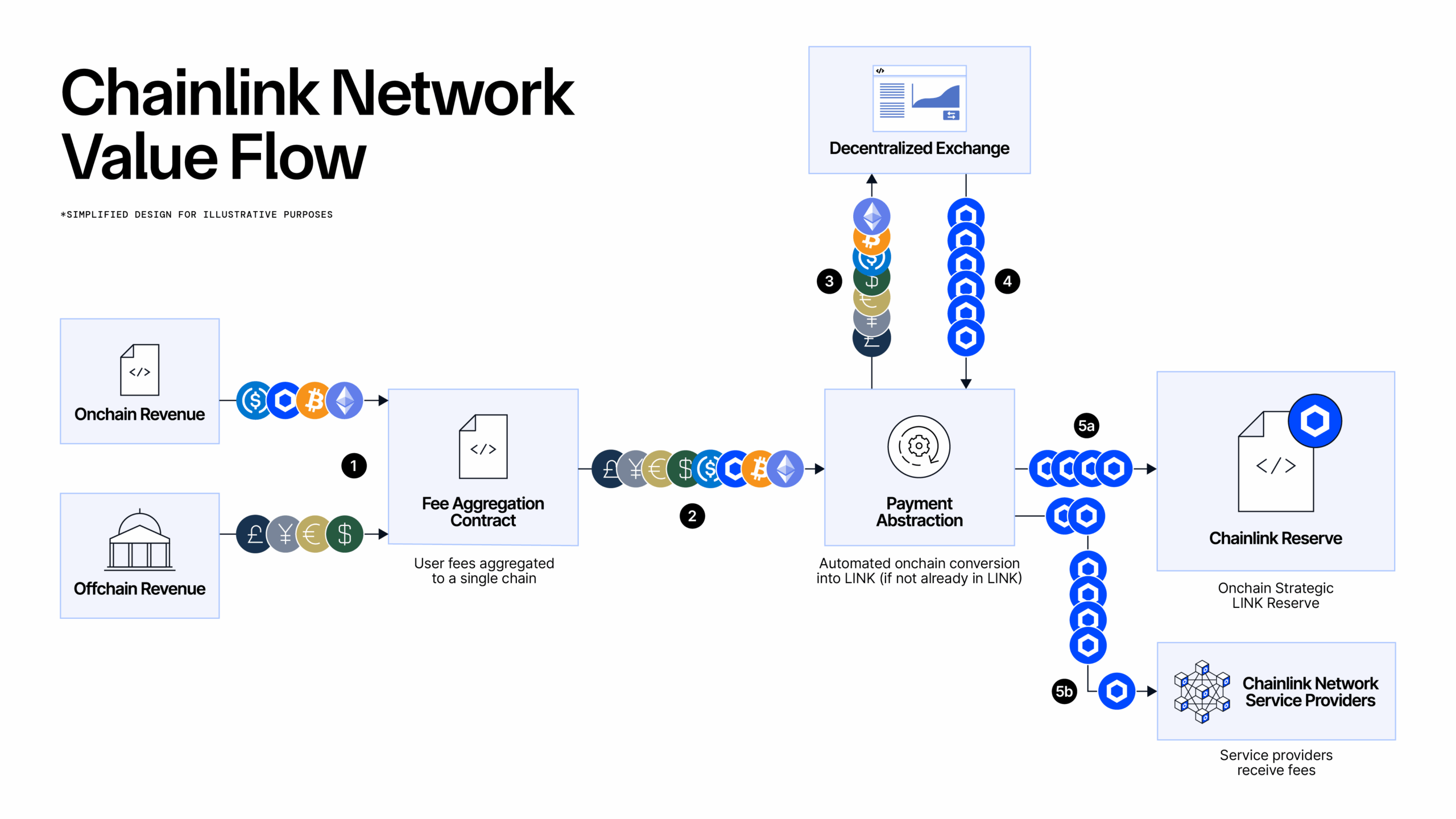
Chainlink Is Inevitable
Chainlink isn’t just important—it’s foundational to the onchain future. Nearly every blockchain application needs external resources, and Chainlink is the standardized way to combine different blockchains, enterprise systems, and various data, policies, and technologies into unified applications. The opportunity is massive, so if you’re not paying attention yet, you should be.
To learn more about Chainlink, visit chain.link, subscribe to the Chainlink newsletter, and follow Chainlink on Twitter, YouTube, and Reddit.
